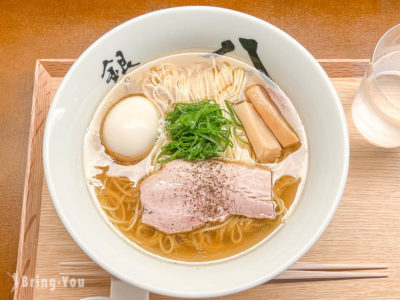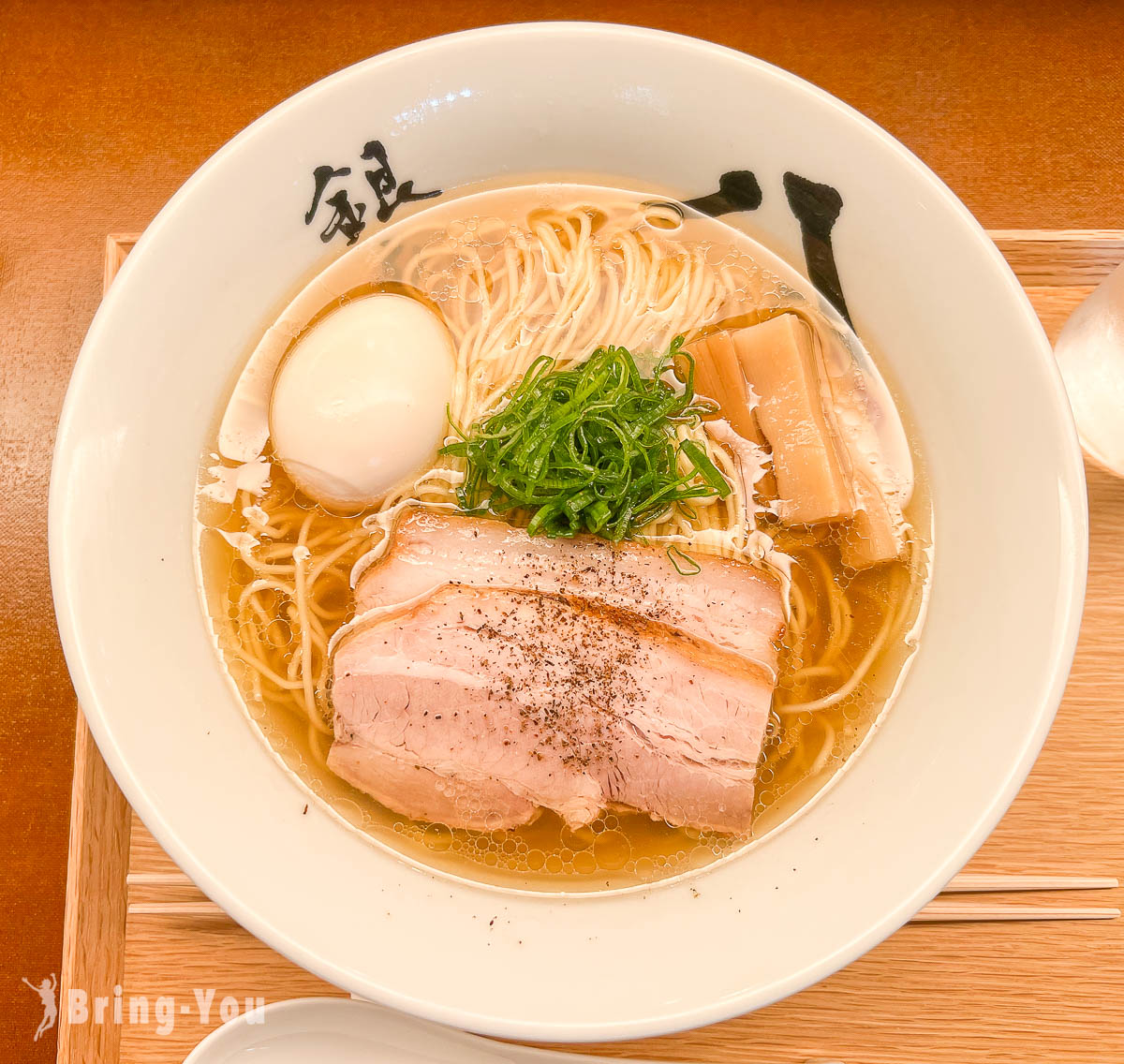
Looking for a ramen experience that’s truly exceptional? Look no further than Ginza Hachigou, the ramen hotspot that has taken Tokyo by storm since its opening in December 2018. Chef Yasufumi Matsumura, with a background as a skilled French cuisine chef in a renowned Kyoto hotel, embarked on a new journey to create something extraordinary: a fusion of French and Chinese flavors in ramen.
What sets Ginza Hachigou apart is its unique French-style clear broth, which has earned it the coveted recognition of a Michelin one-star rating. Despite being a relatively young restaurant, Ginza Hachigou swiftly garnered Michelin’s recommendation and secured a star, cementing its position as a rising star in the Tokyo ramen scene.
Chef Matsumura’s dedication to creating affordable yet exquisite ramen is evident in every bowl. Embracing the concept of French consommé, he crafts a light and flavorful broth without the use of soy sauce or artificial seasonings. It’s no wonder that even notable figures like Justin Bieber couldn’t resist a visit during his time in Tokyo. Join the ramen enthusiasts flocking to Ginza Hachigou and indulge in a truly remarkable dining experience.
For more Tokyo ramen, check out this article: What Is The #1 Ramen In Tokyo? 8 Best Ramen Spots In Tokyo 2023 You’ve Gotta Try
Where is Ginza 85 located?
- Address: 3-14-2 Ginza, Chuo-ku, Tokyo
- Business hours: 11:00~until sold out (Closed on Saturdays, Sundays, and irregular holidays. Please check the official Instagram before visiting.)
- Notes: No reservations accepted. Cash payment only, no credit cards.
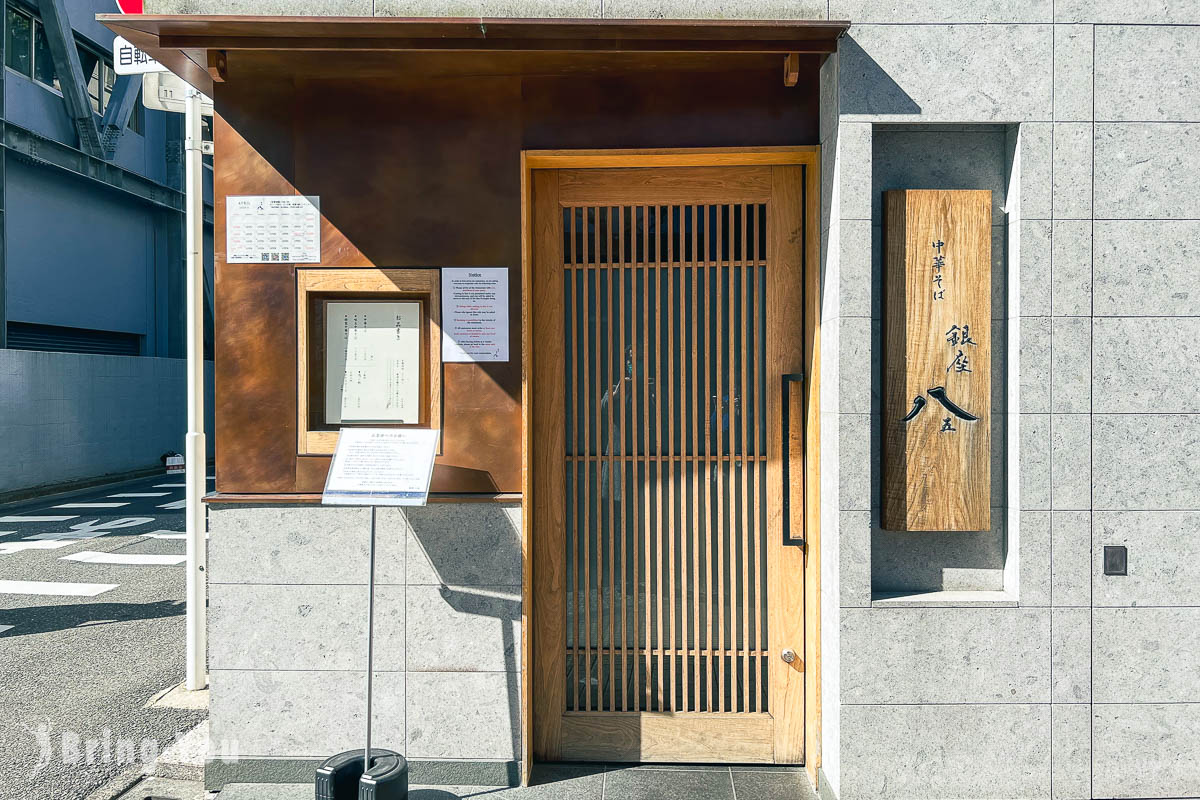
Located in the third block of Ginza, Ginza 85 is just a 3-minute walk from both Higashi-Ginza Station and Shintomicho Station. To be able to queue up early in the morning, we stayed at the Sotetsu Fresa Inn Ginza Sanchome, a hotel in Ginza that is very close by!
Explore Ginza: Your Ultimate Ginza Day Trip Shopping Guide – Complete Itinerary & Must-Try Food Spots
【Ginza 85】Queueing Strategy
Like all Michelin restaurants in Tokyo, the waiting time at Ginza Hachigo after the epidemic is 90-120 minutes, and there is one more thing to pay attention to. Ginza Hachigo is closed on Saturdays and Sundays, and may also be closed unexpectedly. When we visited, it was closed for a temporary break, so be sure to check the official IG before departure, as the restaurant will announce its closure dates.
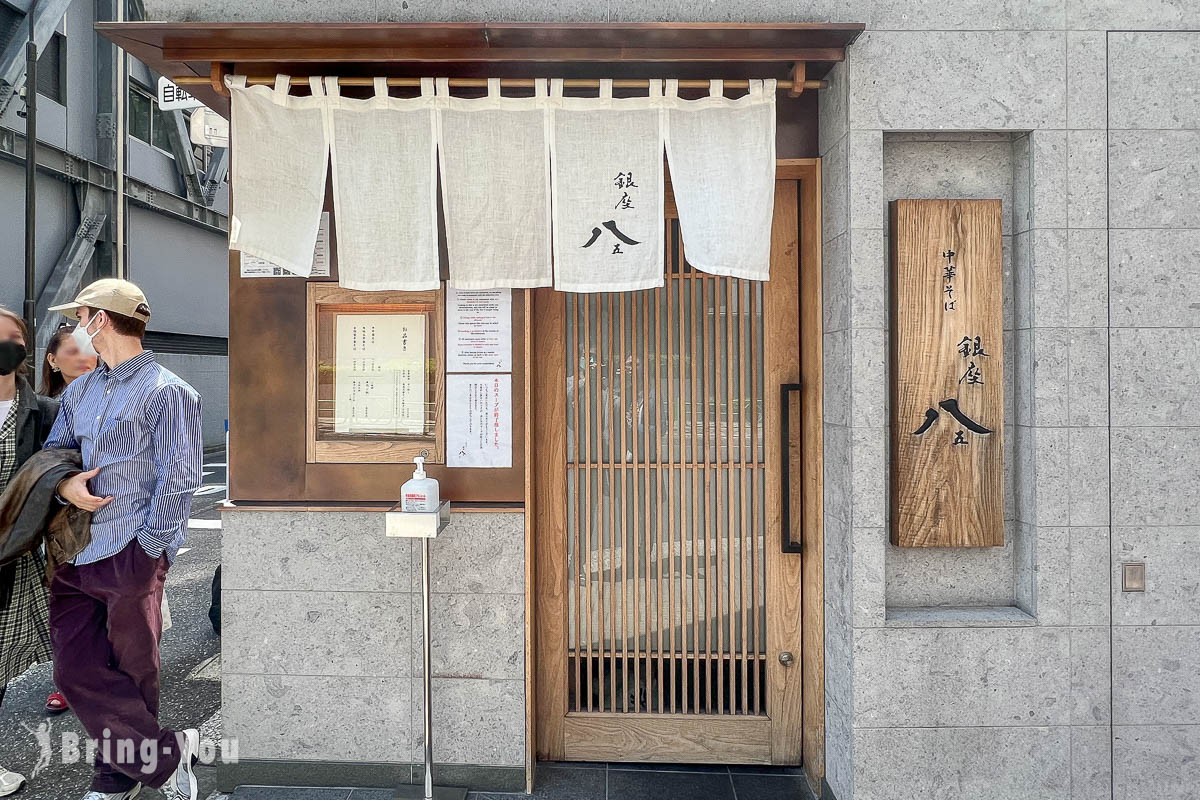
With the crazy experience of queuing at various Michelin restaurants in Tokyo, taking advantage of the location, at 8:30, Piaor Er arrived at the restaurant’s entrance and was the first guest to arrive. Just as Xiao V went to buy breakfast across the street, the second guest arrived and the staff came out of the restaurant to place us in the queue path next to the restaurant, and asked for the number of diners. Like most Michelin restaurants in Tokyo, Ginza 85 also requires all diners to queue on site before allowing them to continue queuing, otherwise they will ask you to go to the end of the line and start over. Fortunately, Xiao V was still within the staff’s line of sight and bought a cup of coffee from the vending machine, then rushed back, allowing us to maintain our first place in line.
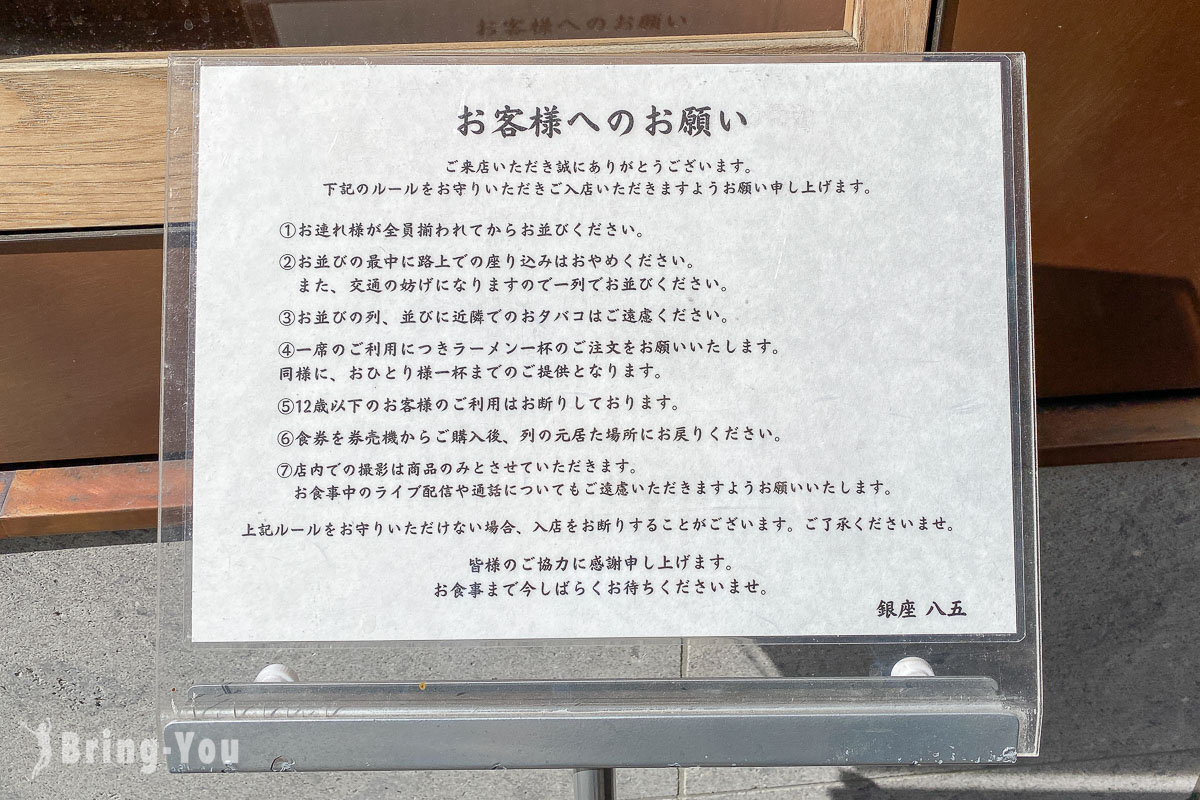
After waiting next to the smelly drain for nearly two hours, it was 10:43 when the staff came out again. After confirming the number of people in the queue, they put up “sold out” signs at the front and back of the line. Yes, Ginza 85 only sells 60 bowls of ramen per day based on the amount of soup, and each person can only order one bowl. Once it’s sold out, they won’t accept any more customers.
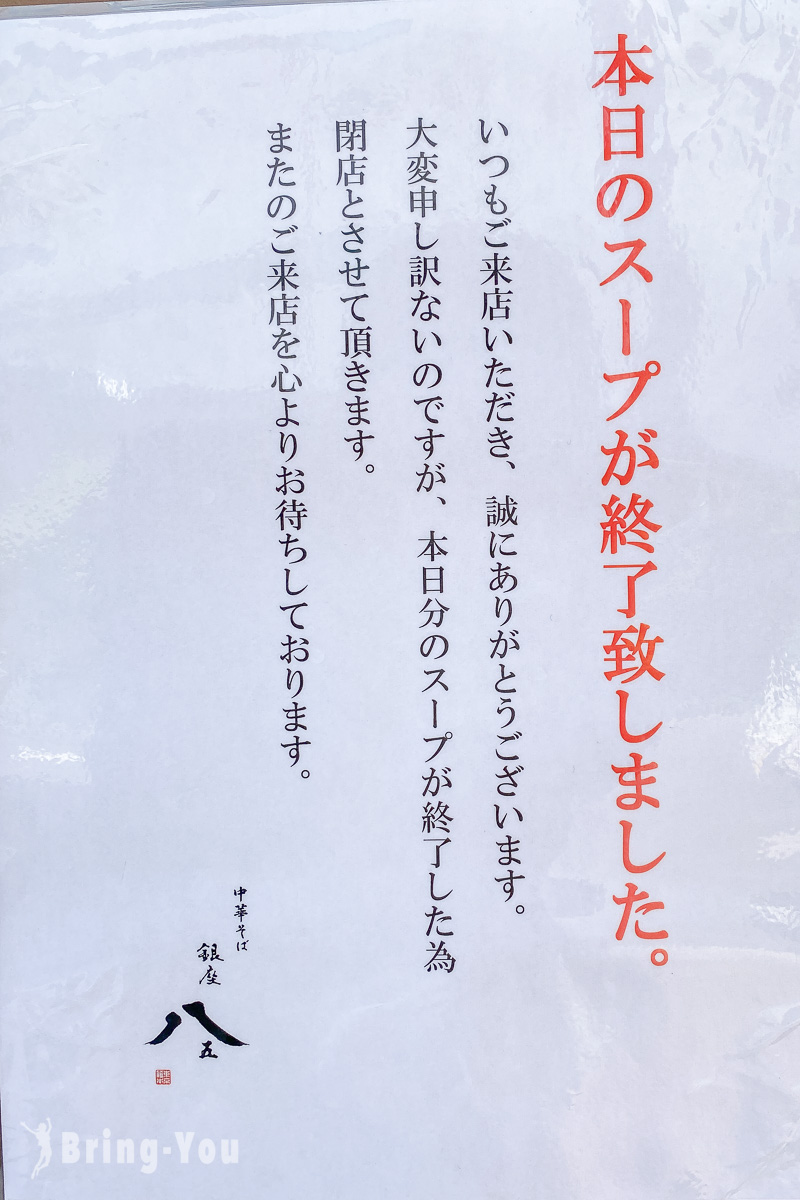
Introduction to Ginza 85’s Menu
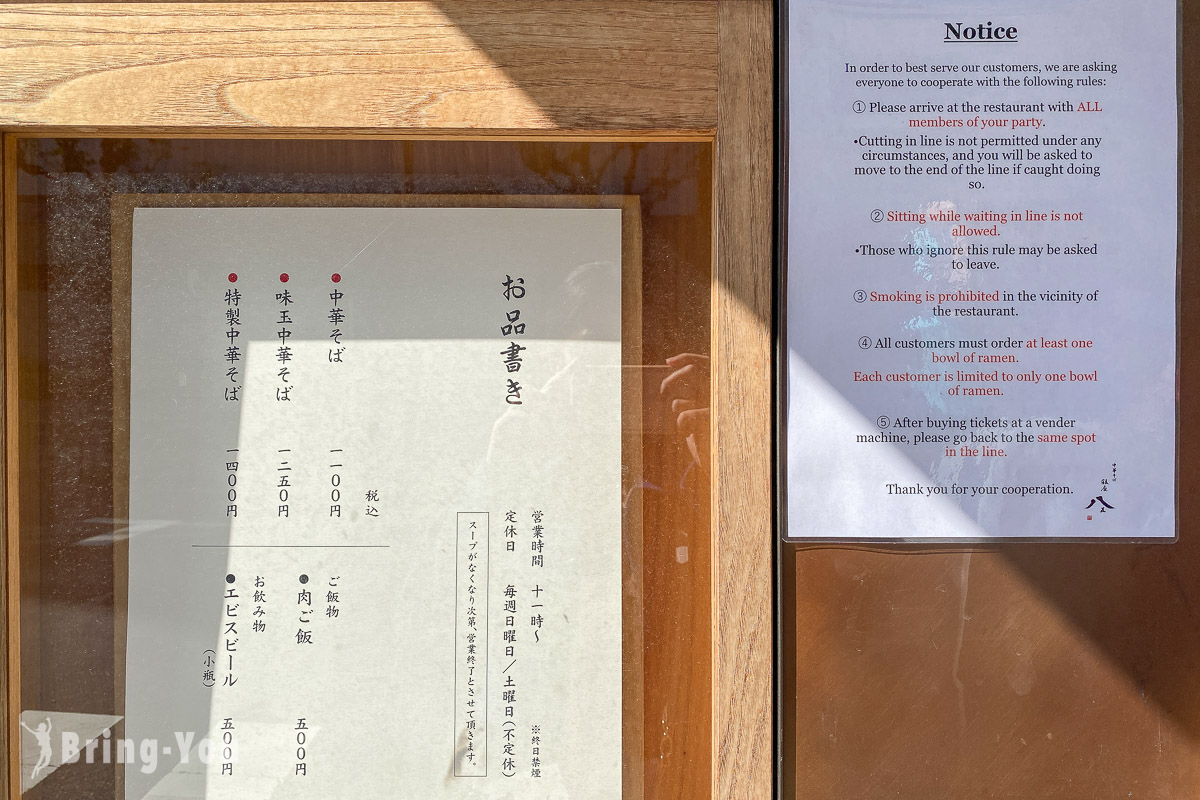
The only two dishes available at 85 Ginza are “Chinese Ramen” and “Rice”, with different variations based on the ingredients used. Prices start at 1,100 yen, but they may increase over time. I won’t specify the exact price increase, so you’ll need to budget accordingly.
- Chinese Ramen: Basic version with only dried bamboo shoots and a slice of char siu pork as toppings
- Flavored Egg Chinese Ramen: One additional flavored egg compared to the basic version
- Special Chinese Ramen: One extra slice of char siu pork compared to the flavored egg version
- Pork Rice Bowl: Char siu pork served over rice
【Ginza 85】Ordering Method
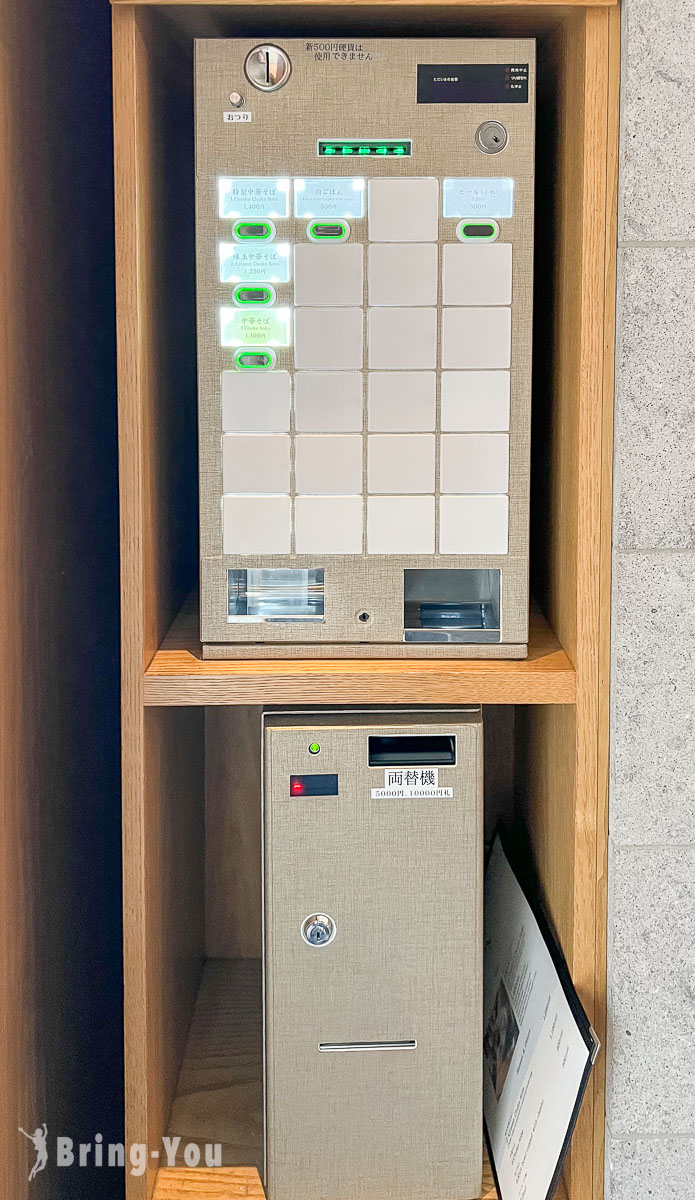
Japanese ramen shops still do not accept credit cards. The Ginza 85 Point restaurant uses a food ticket machine and only accepts cash. If you only have large bills, there is also a coin exchange machine below to change into small change for payment.
【Ginza 85】Dining Environment
Photography is not allowed inside the Ginza 85 store. Only photos of the food you ordered are permitted. Therefore, I will describe the dining environment in text:
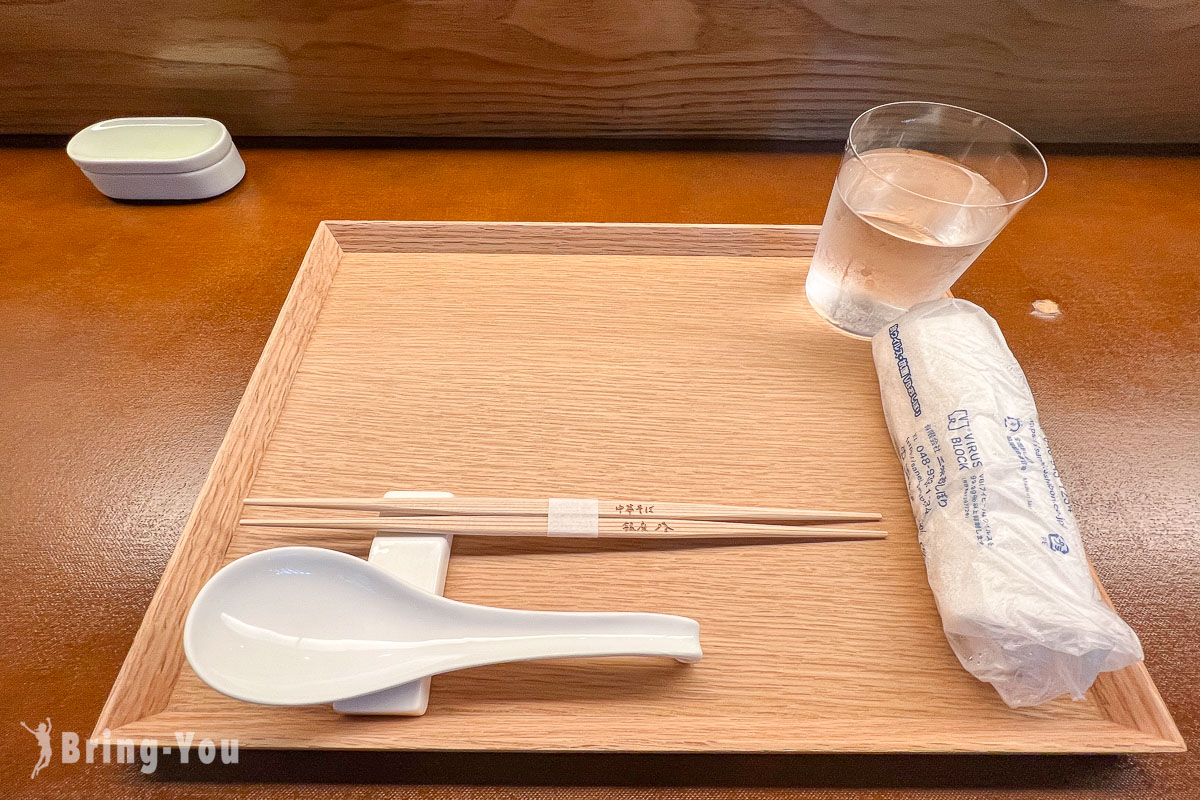
I’ve been curious for a long time about why Ginza 85 is called “85”. Later, I found out that it’s because the store is only 8.5 square meters, with only 6 seats. This is one of the reasons why there is always a long line outside. Although the space is small, the decoration is quite elegant, with a French delicate style blended with Japanese culture, and beautiful music playing in the background.
【Ginza 85】French Clear Soup
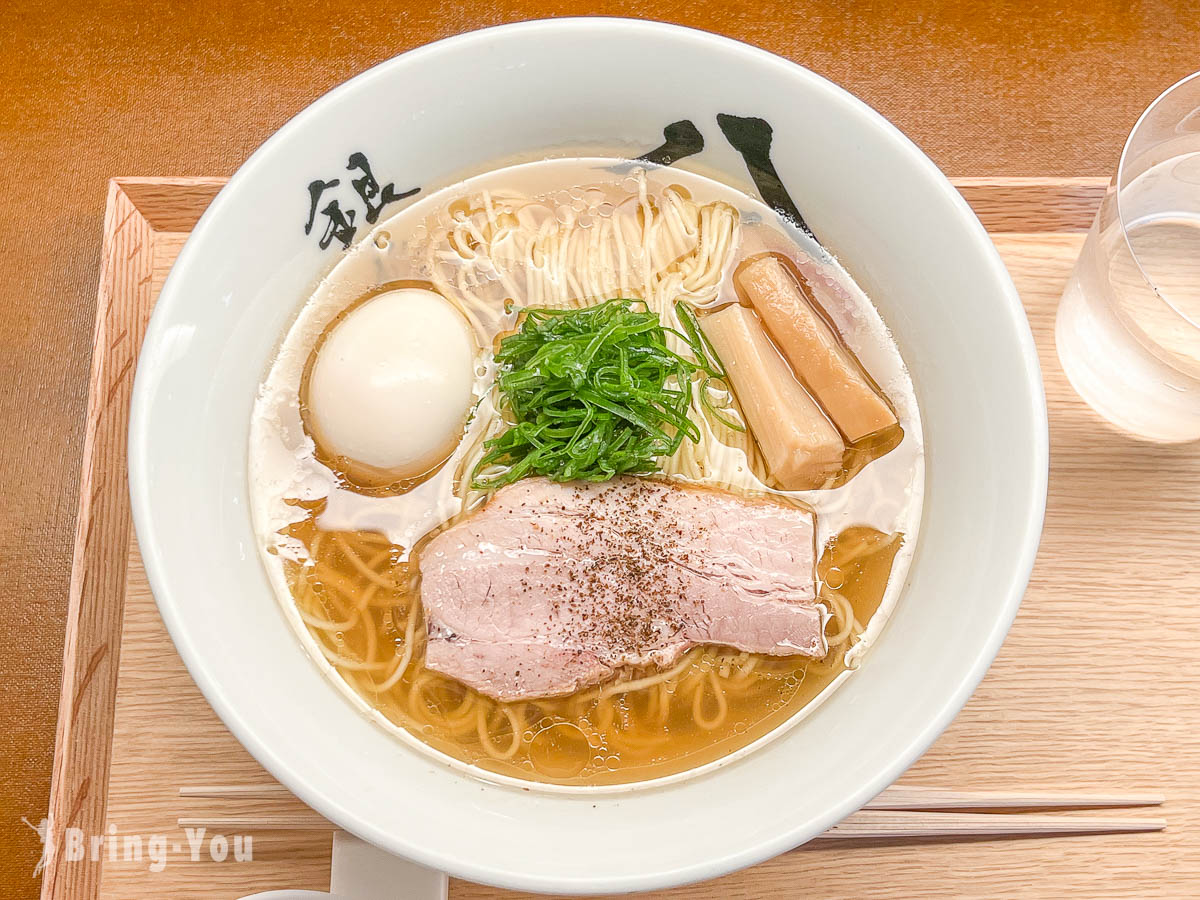
Before introducing the ramen dishes, let’s first talk about its most important secret weapon – the soup base. The owner of this shop, Yasufumi Matsumura, is not an ordinary chef. He used to be a French cuisine chef at a hotel in Kyoto. He firmly believes that a truly delicious soup base is created by the natural freshness and saltiness of the ingredients themselves. Therefore, he boldly abandoned the traditional method of using tare sauce to make soup, and applied the French clear soup technique to the ramen soup base.
The broth of Ginza 85 is based on free-range chicken and duck, and is enhanced with selected ingredients such as kelp, dried shiitake mushrooms, dried tomatoes, and raw ham. The owner spent over half a year researching and adjusting the broth to achieve the perfect state. This broth is an unprecedented “no soy sauce” light and refreshing broth, truly subverting tradition!
Matsumura features the importance of a so-called pure ramen sauce by getting rid of tare sauce in the making. To him, the reputation of Chukasoba Ginza Hachigou is defined by Tanrei, a style of ramen using a clear, golden soup as the base.
In a bowl of Chuka soba ramen, the two-day stewed broth is a beautiful blend of Japanese and Western elements where kombu, dried shiitake, dried tomatoes, and chicken stock make the statement.
【Ginza 85】Special Chinese Ramen
Because Piao’er has a small appetite, she ordered the “Chinese-style Ramen with Soft-boiled Egg”. However, I will introduce to you the photo of the “Special Chinese-style Ramen” that Little V ordered, because all the ingredients are included in this dish: two slices of char siu, dried bamboo shoots, sweet boiled egg, and Kyoto’s Kujou green onions. If you have a big appetite, I also recommend that you directly choose the “Special Chinese-style Ramen” that has everything.
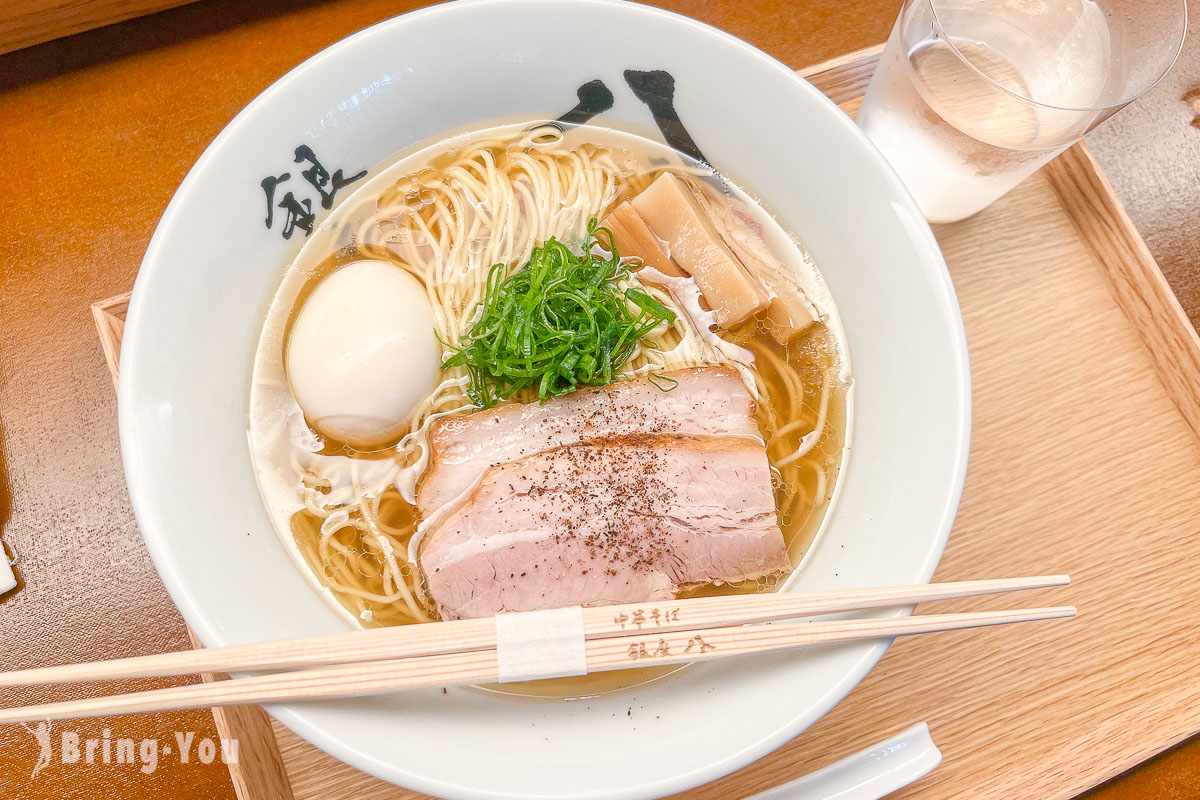
The char siu, which is grilled by the chef just before serving, is sprinkled with Madagascar fish sauce pepper. It is very tender and refreshing, making it a great option for those who dislike greasy Japanese meat dishes. It practically melts in your mouth and I personally love it.
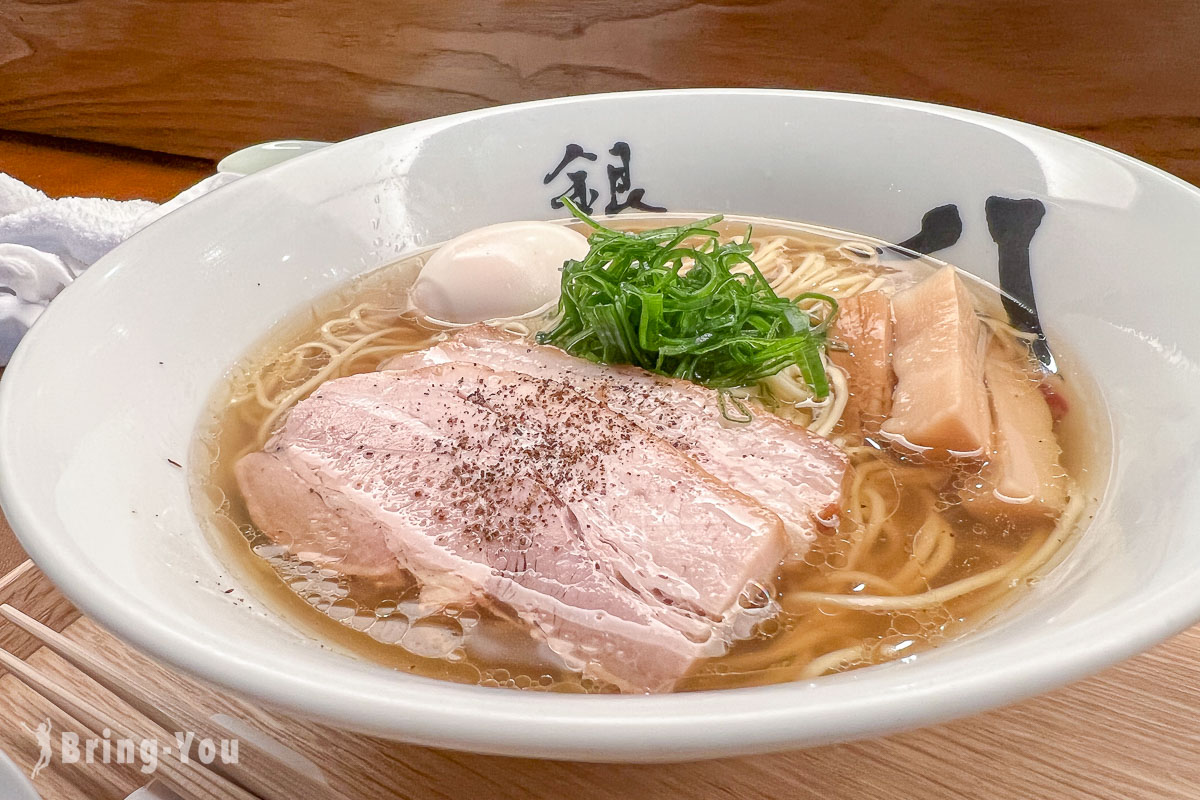
Made by the ramen factory Asakusa Kaikaro, the noodles used for this signature dish bathes in the light and elegant profile of the soup, boasting a slightly chewy bite without being soggy.
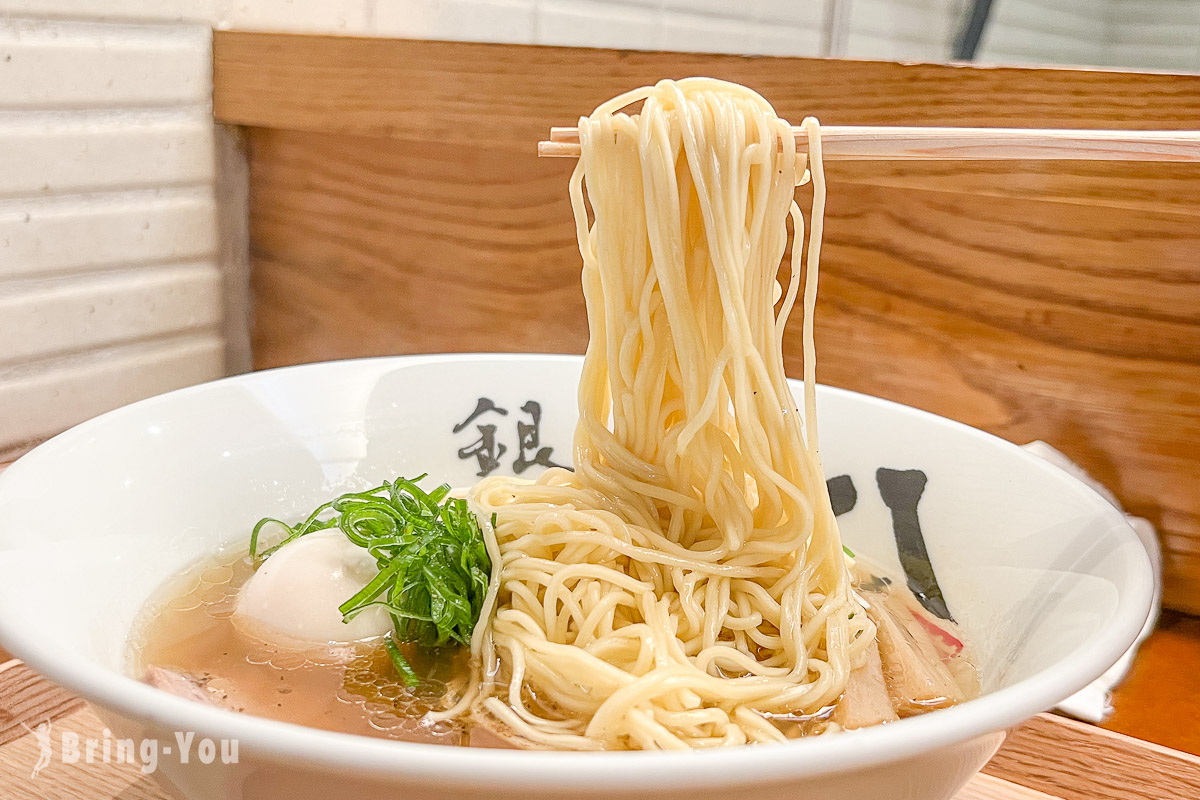
On the top, black pepper is sprinkled on the thin and yellow noodles, adding a layer of aroma to the subtle yellow hue of the dish. Finally, Matsumura carefully adds a few slices of char siu, dried bamboo shoots, soft-boiled eggs, and Kujo green onion to give it a complete finish.
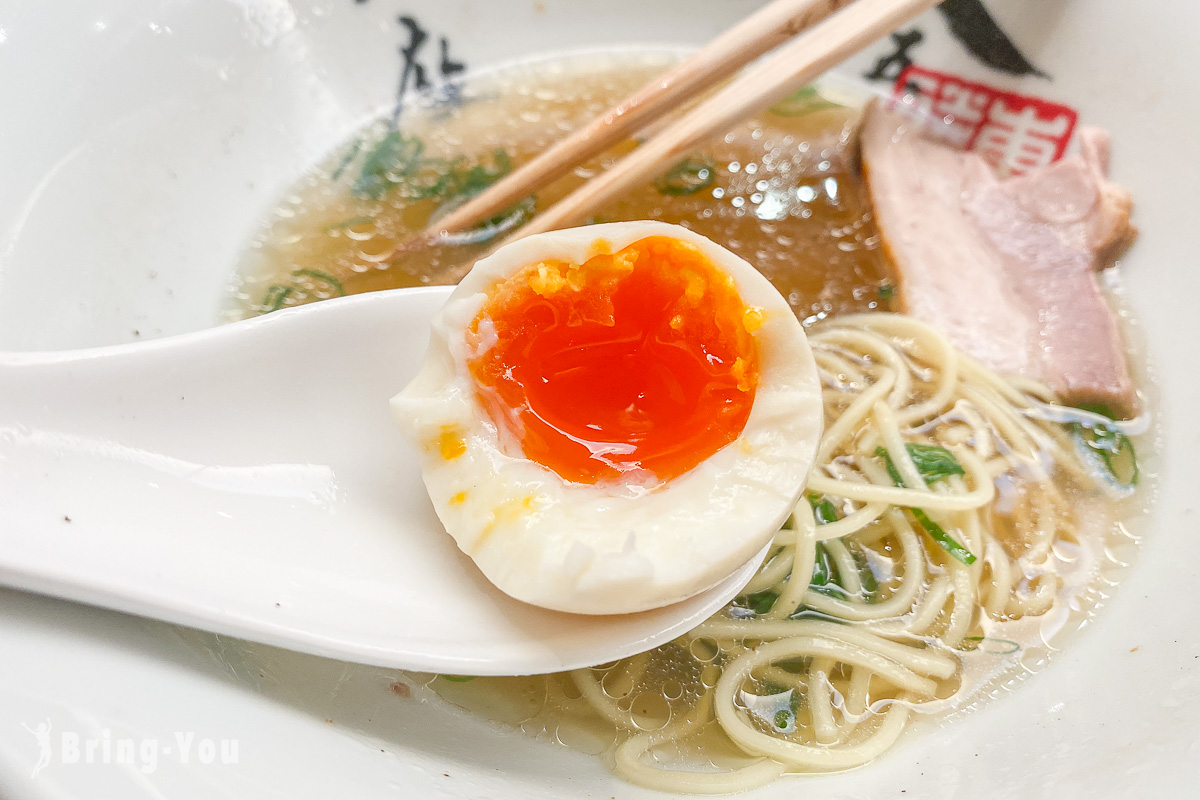
Like most Michelin-level ramen shops, the broth is not oily, greasy, or salty. Even picky eaters like me can finish the entire bowl of soup without feeling burdened.
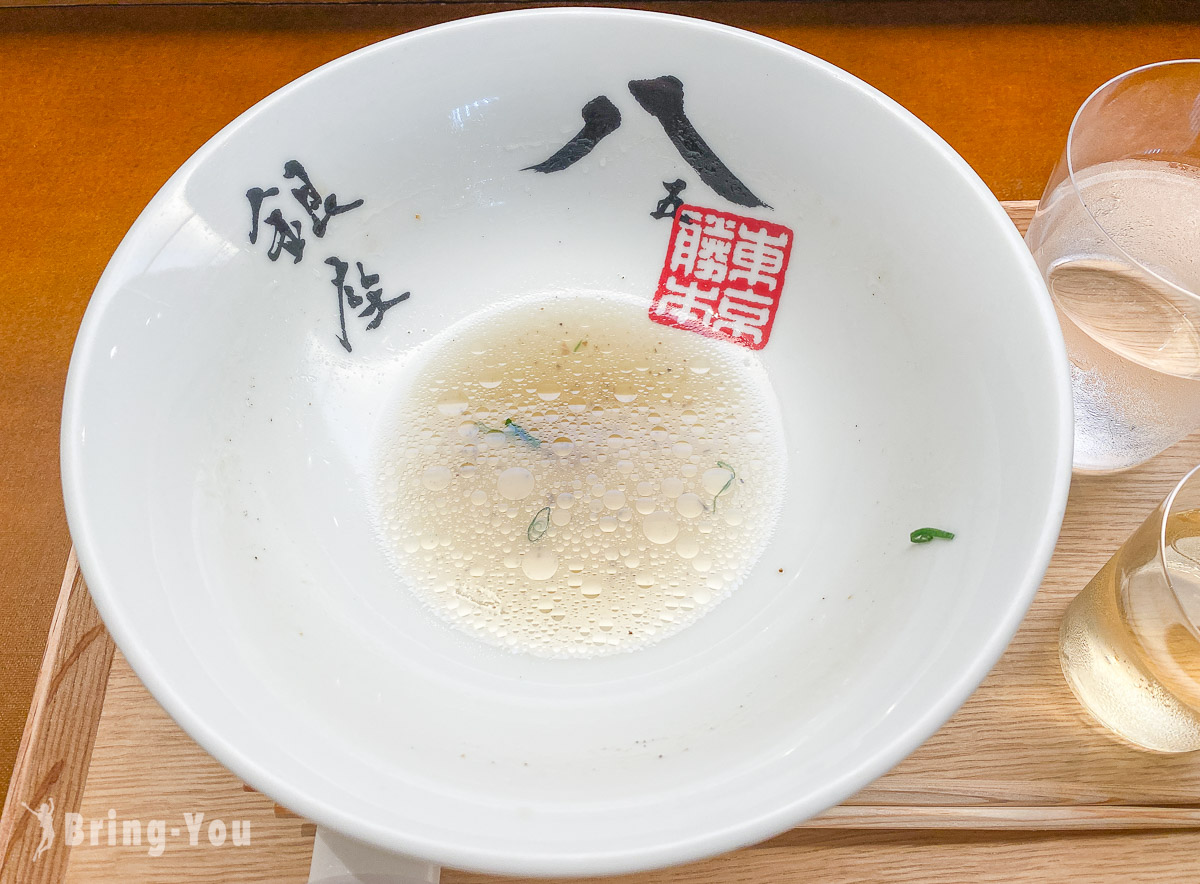
【Must-Try in Ginza 85】Chashu Rice Bowl
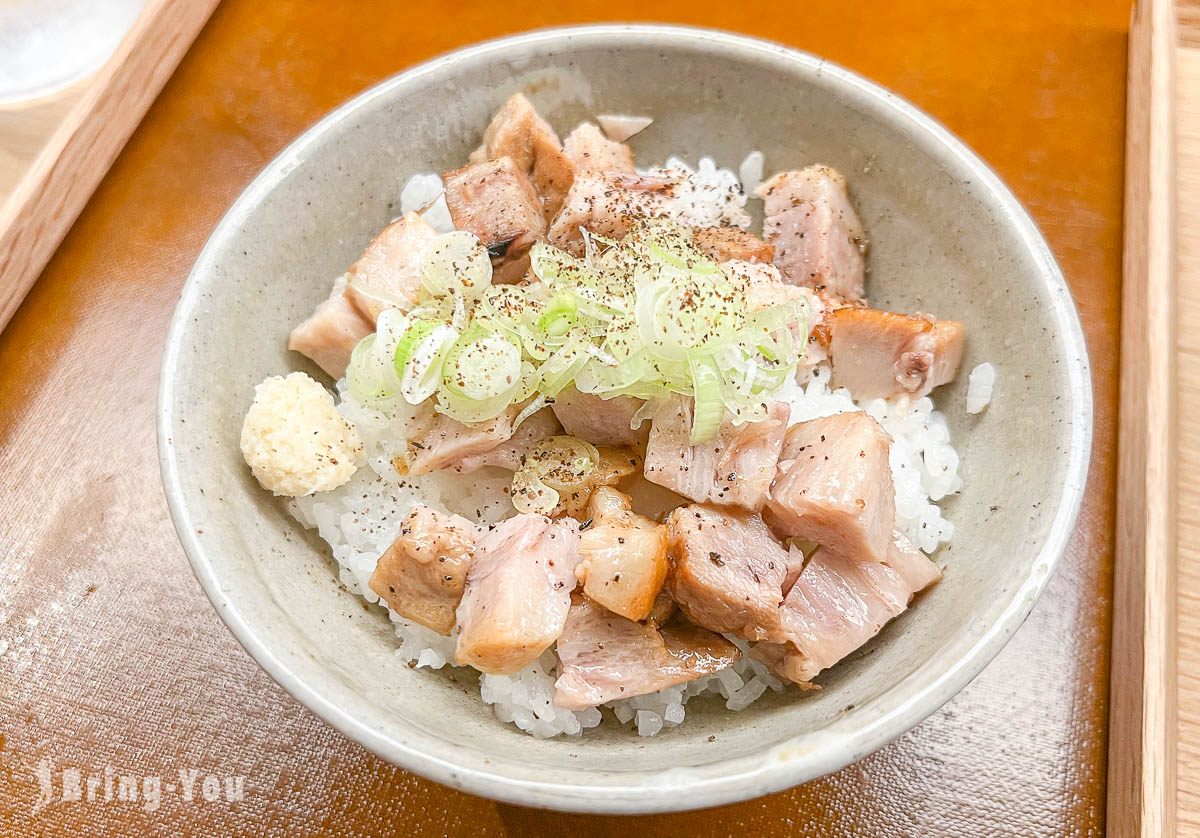
If you come in a group of two, it would be a waste not to order an extra bowl of rice to make full use of those succulent char siu pork steeped in the heat of horseradish.
It will be served when you’re halfway through your ramen. The char siu on top is the same as the one in the ramen, but it’s placed on rice and comes with a ball of wasabi, making it a refreshing dish. When you’re halfway through, remember to pour the ramen soup into the rice and enjoy it as a tea rice dish, which is even more delicious.
【Ginza 85】Buckwheat Tea
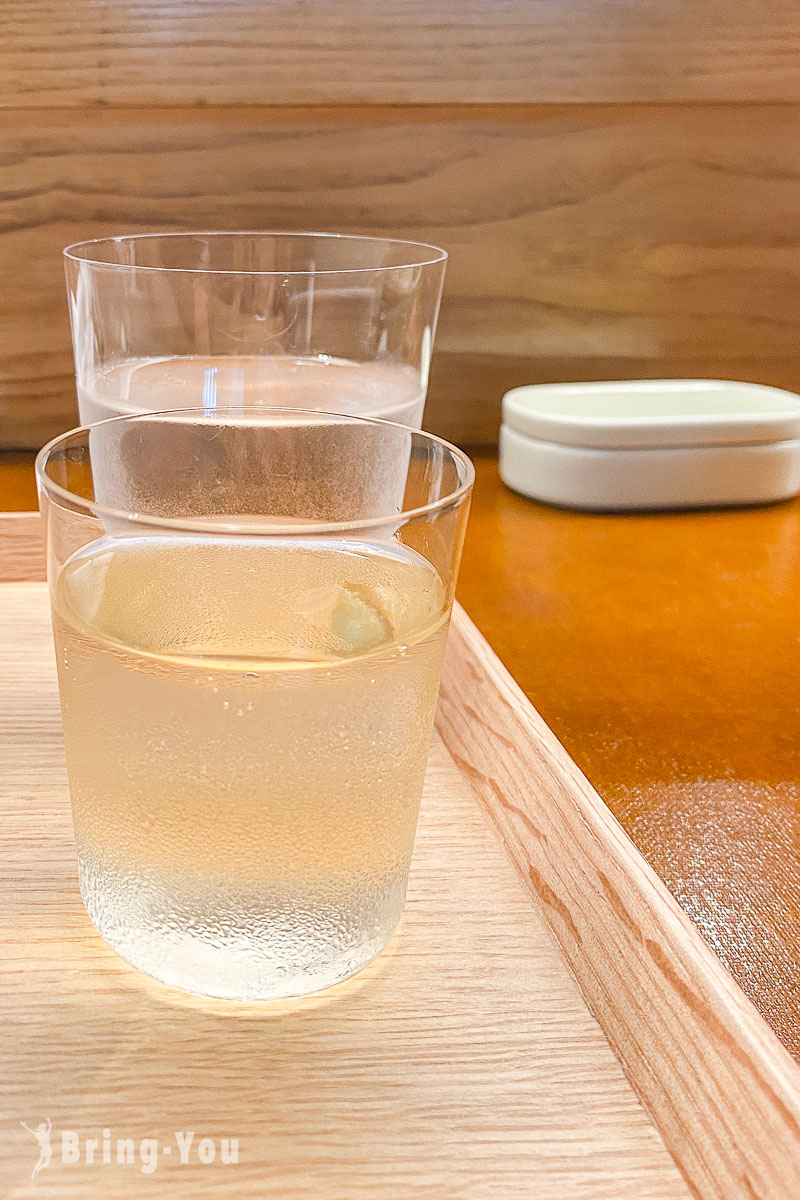
When finishing the ramen, the waiter will serve a cup of buckwheat tea to relieve the greasiness. The tea itself is quite tasty, but what impressed me more is the high-quality glass cup it was served in.
【Summary】Is Ginza 85 worth it?
I personally love the refreshing broth at Ginza 85, especially if you enjoy the multi-layered, light and fresh broth that is typical of high-end cuisine. However, if you prefer the heavy traditional Japanese ramen, Ginza 85 may not be the best choice for you. Lastly, the two-hour wait time is extremely high, although Ginza 85 is a dish I would be willing to eat every month. But if you have to wait two hours just to eat this bowl of ramen, unless you are like me and have nothing to do in Tokyo, as a beginner on a Tokyo free trip, it is definitely more worthwhile to spend your time on other Tokyo attractions.
Ultimate Tokyo Food Guide: 20 Best Japanese Foods to Try in Tokyo
